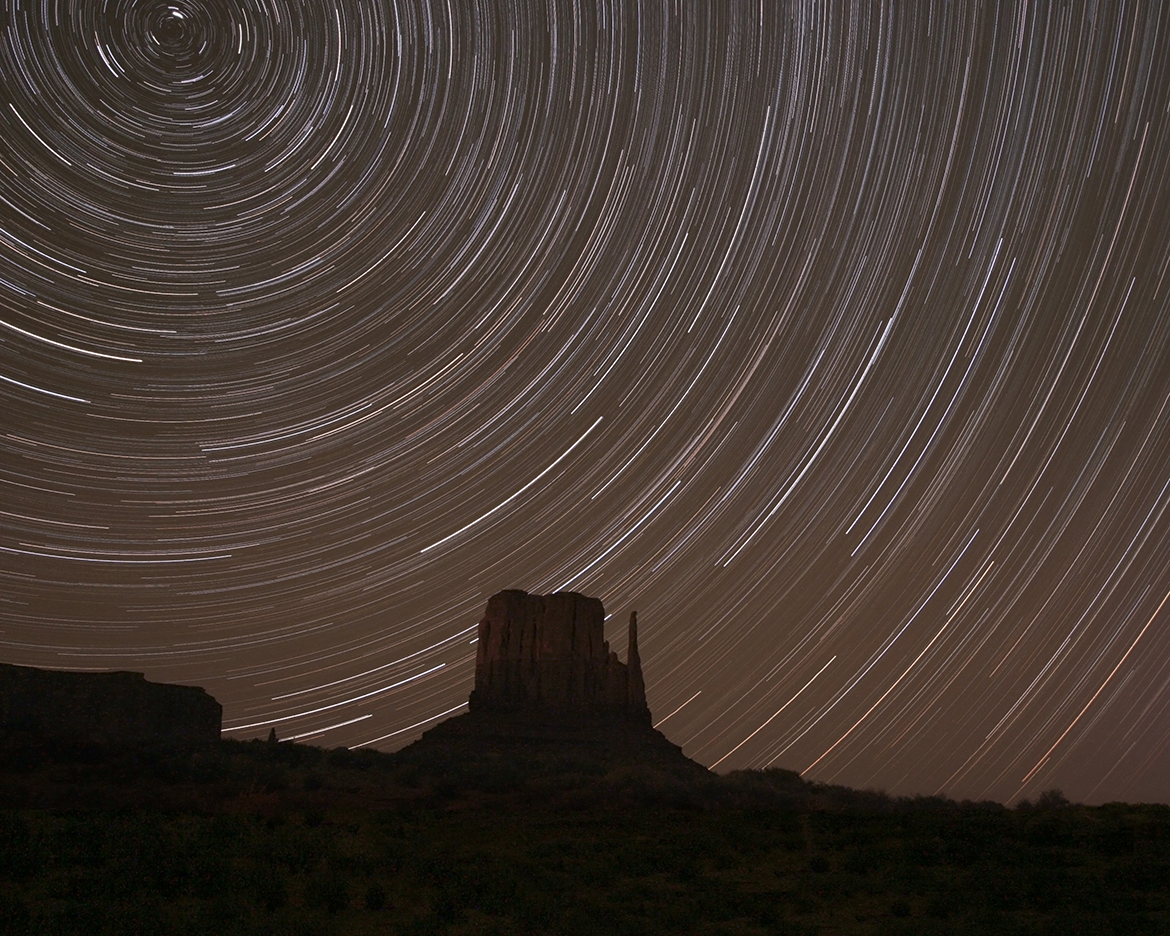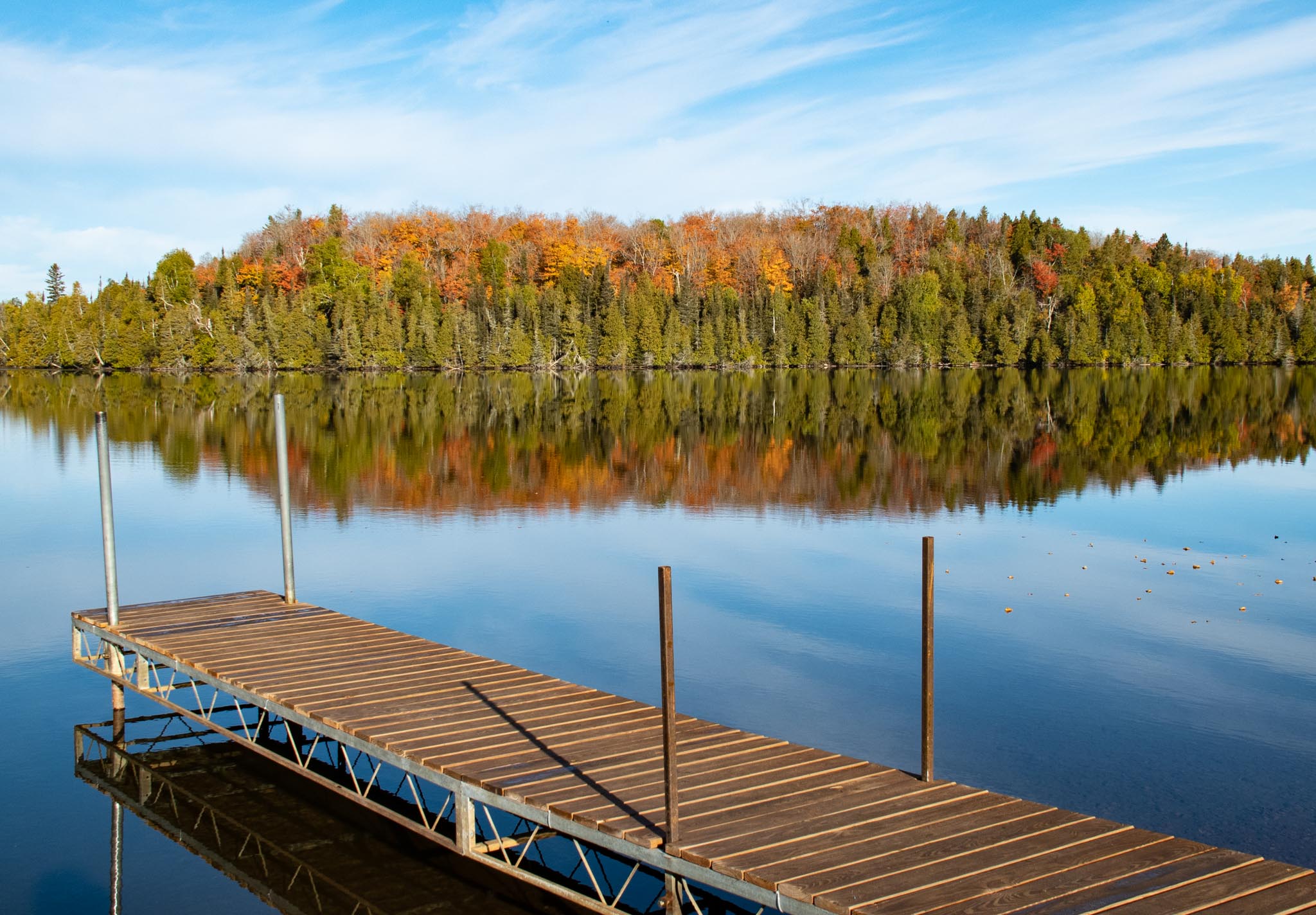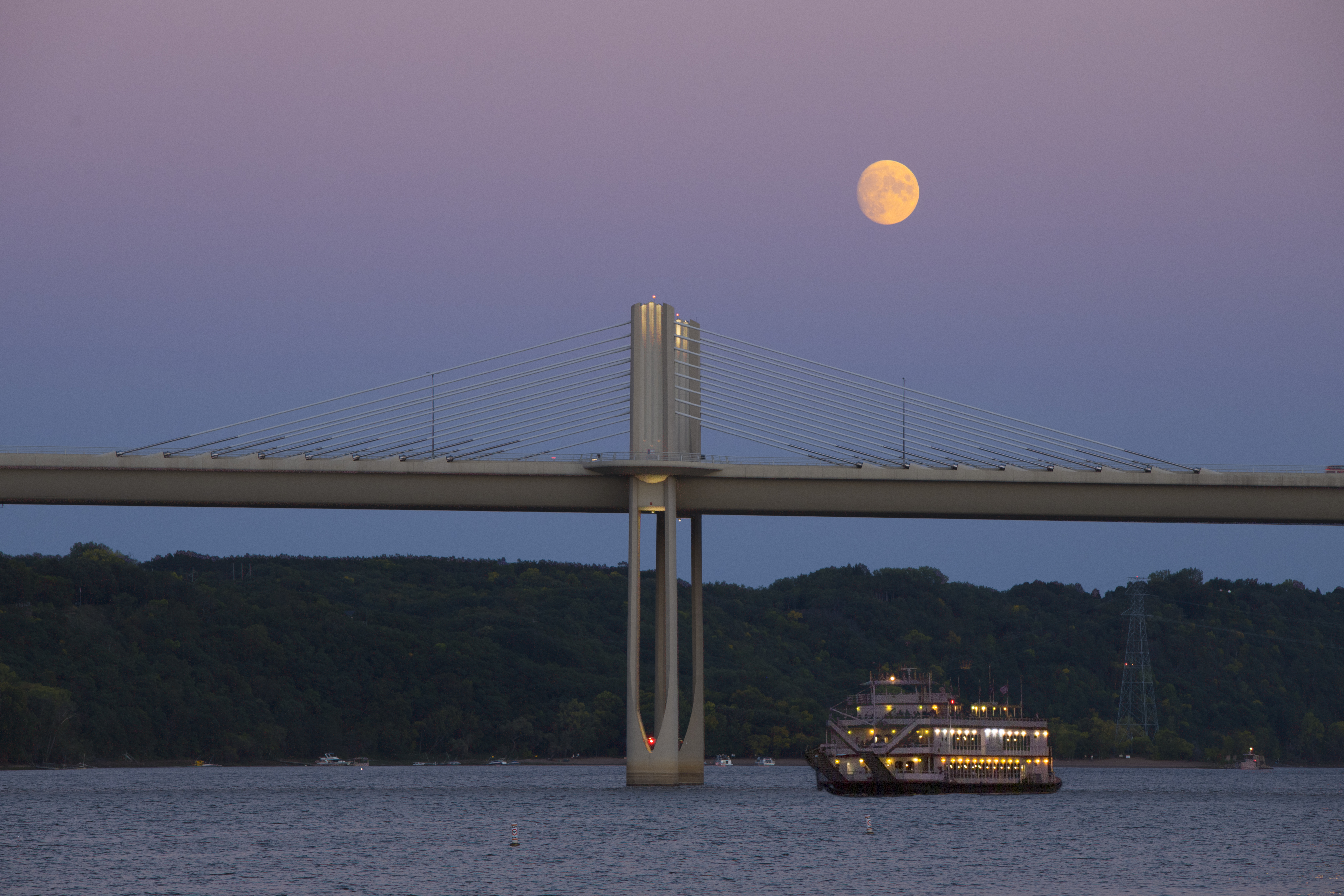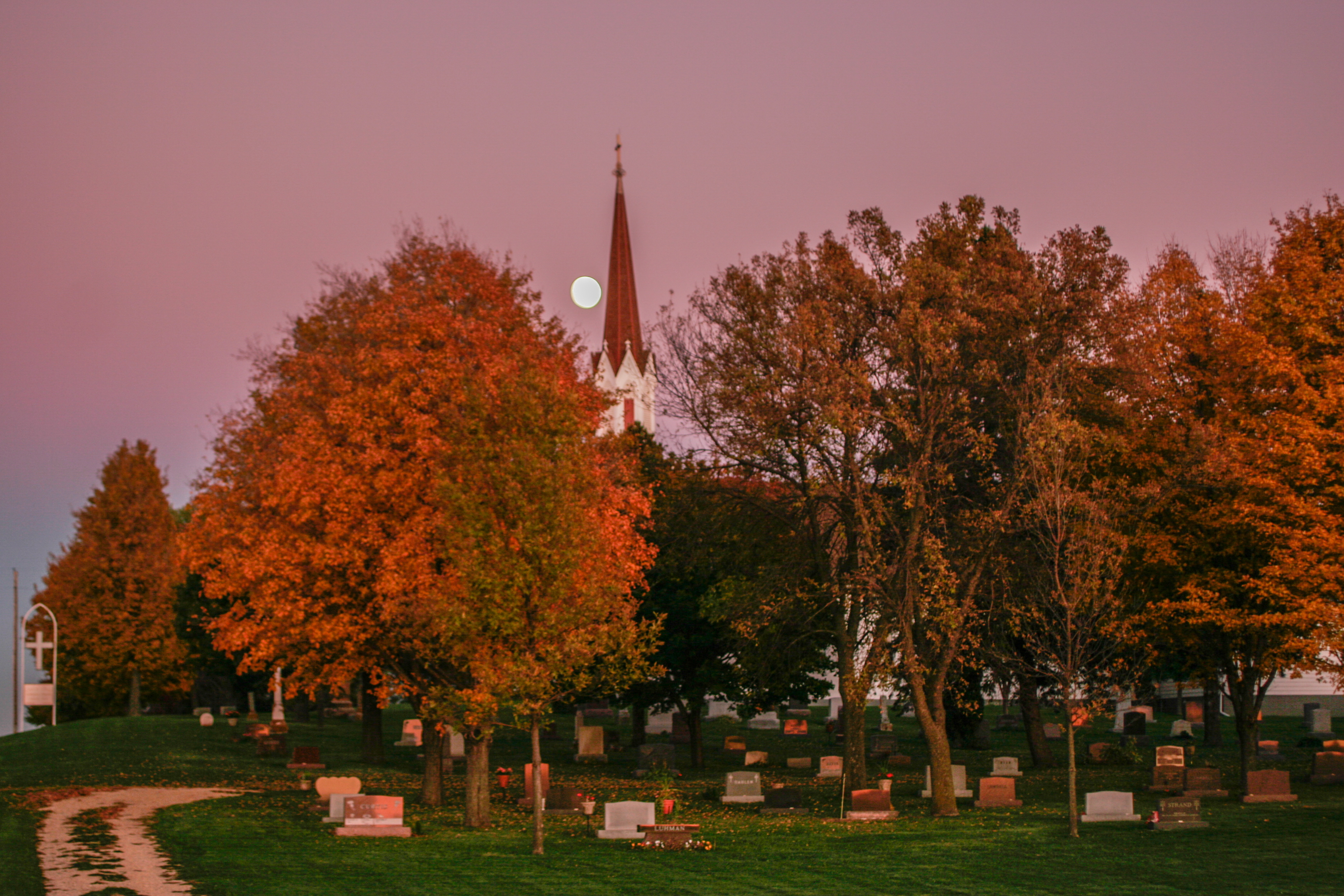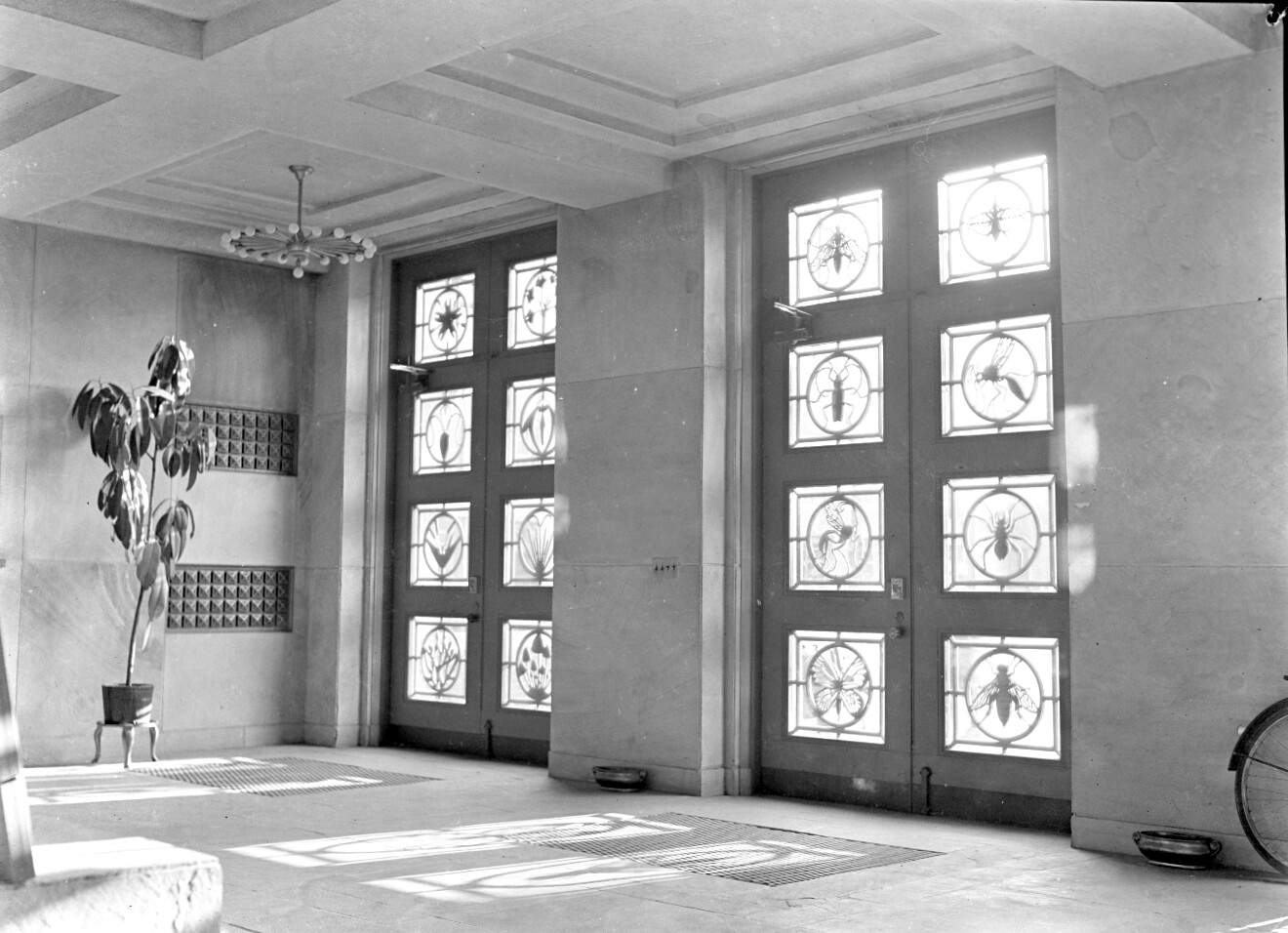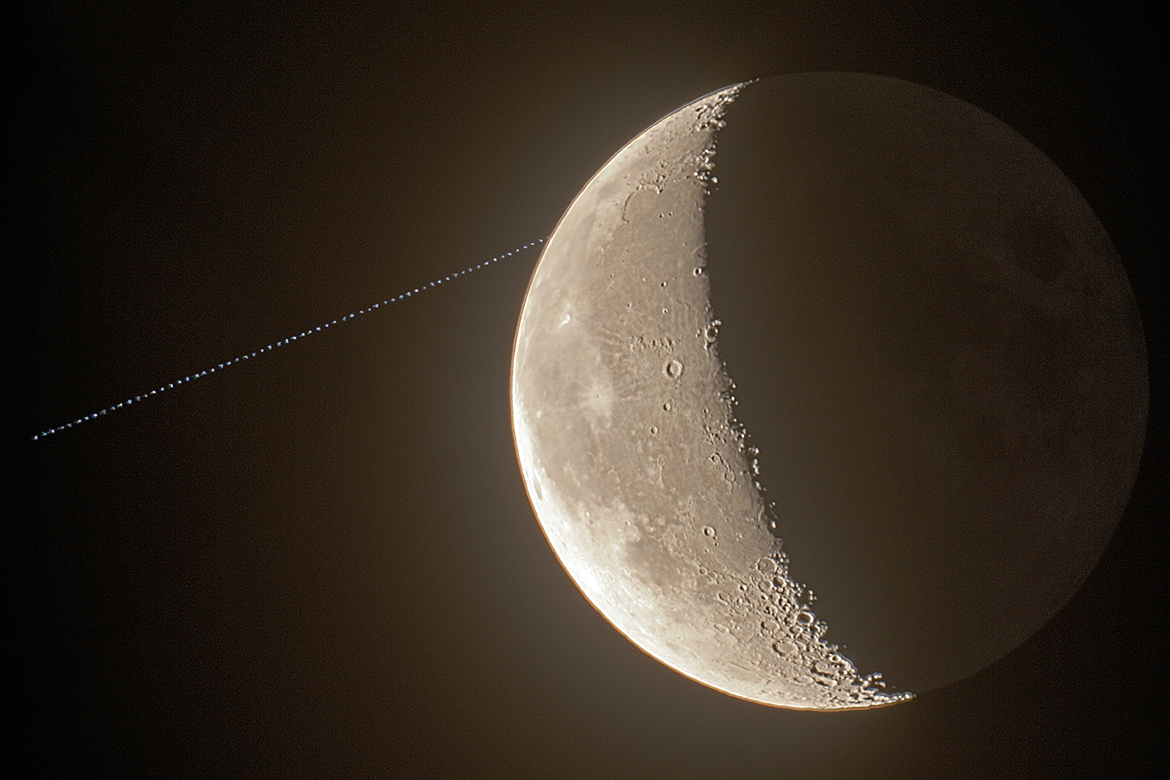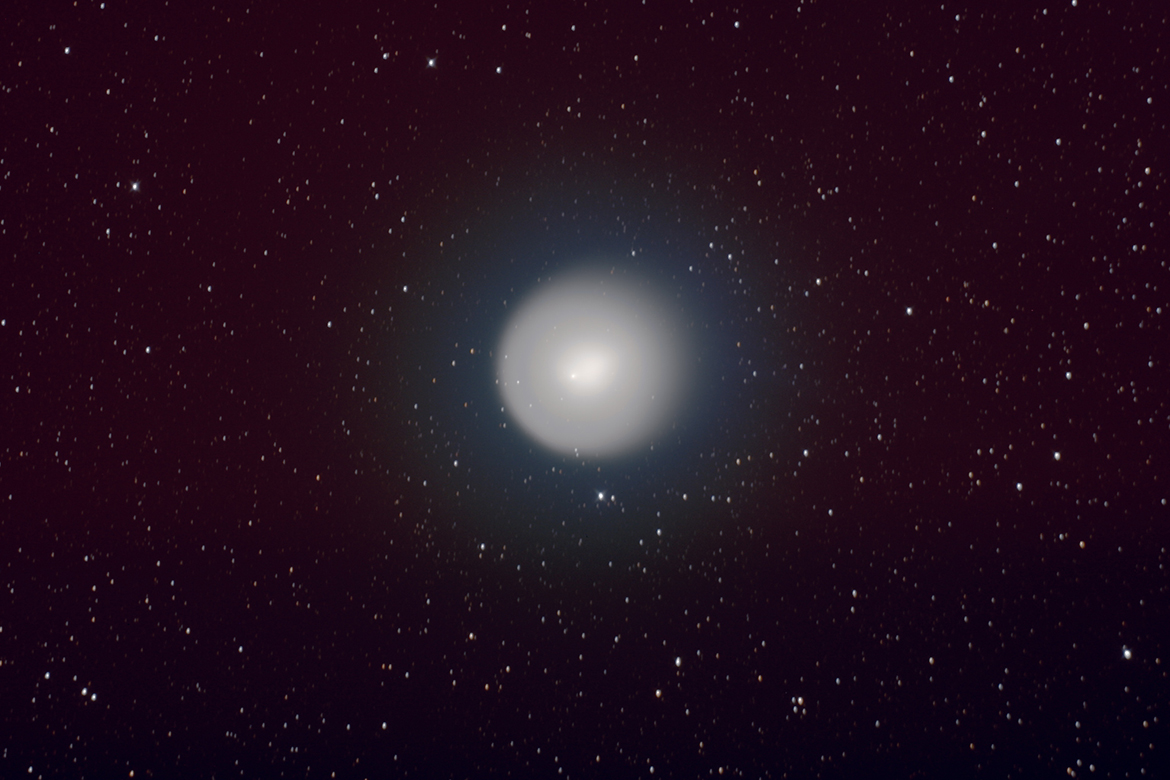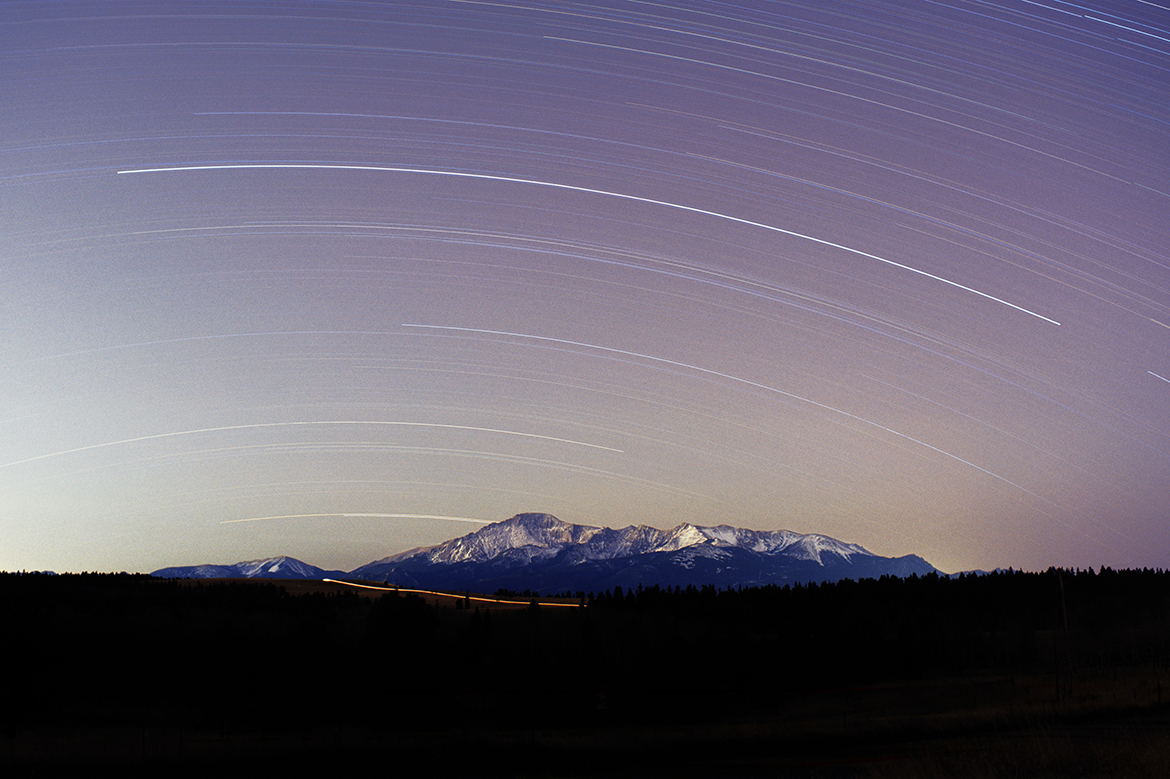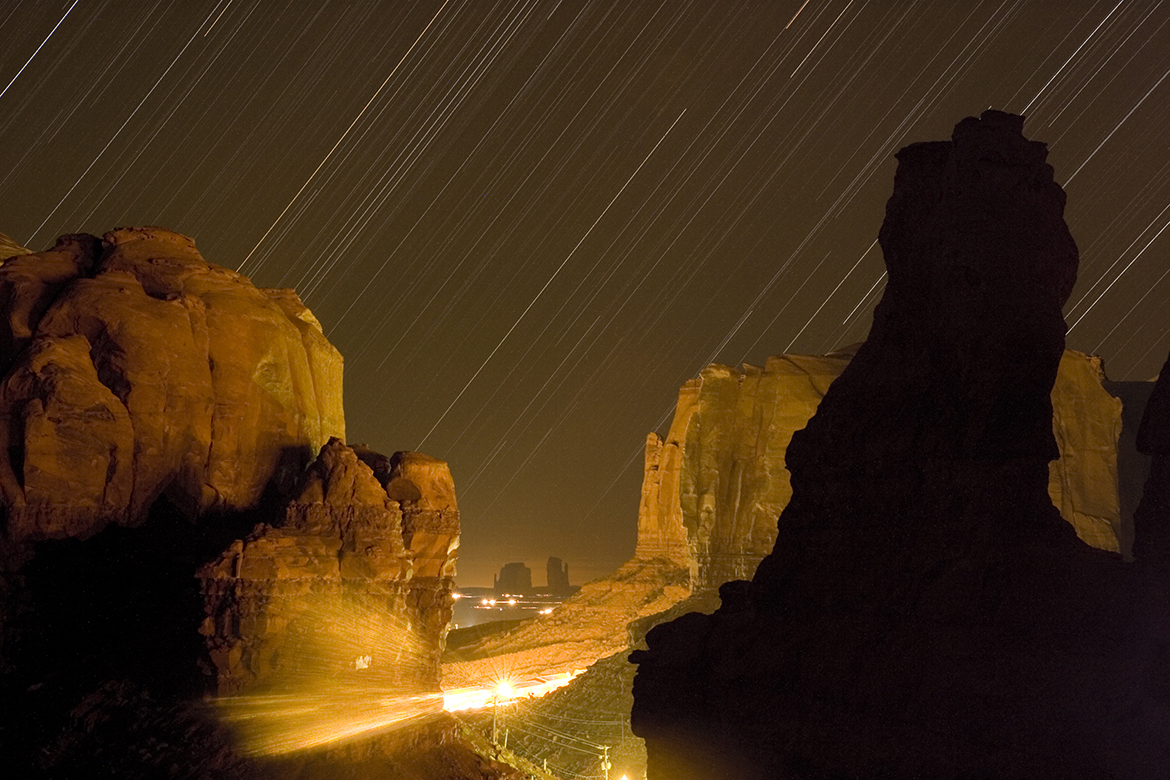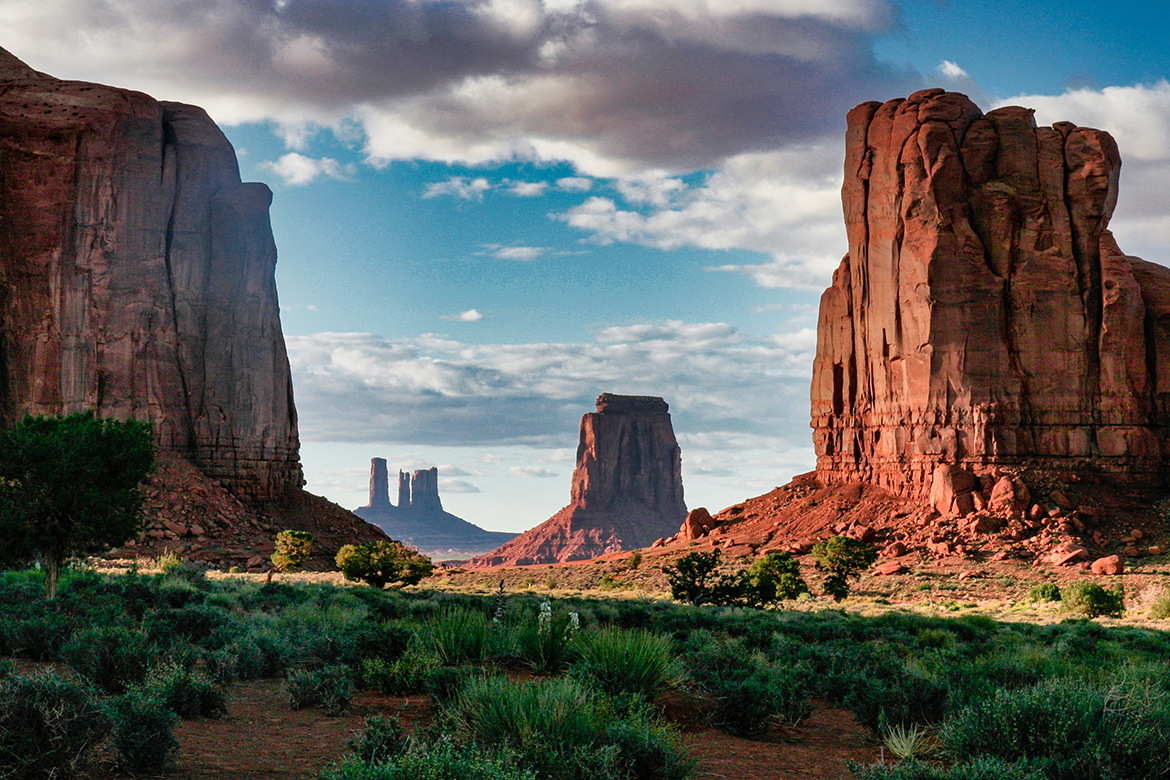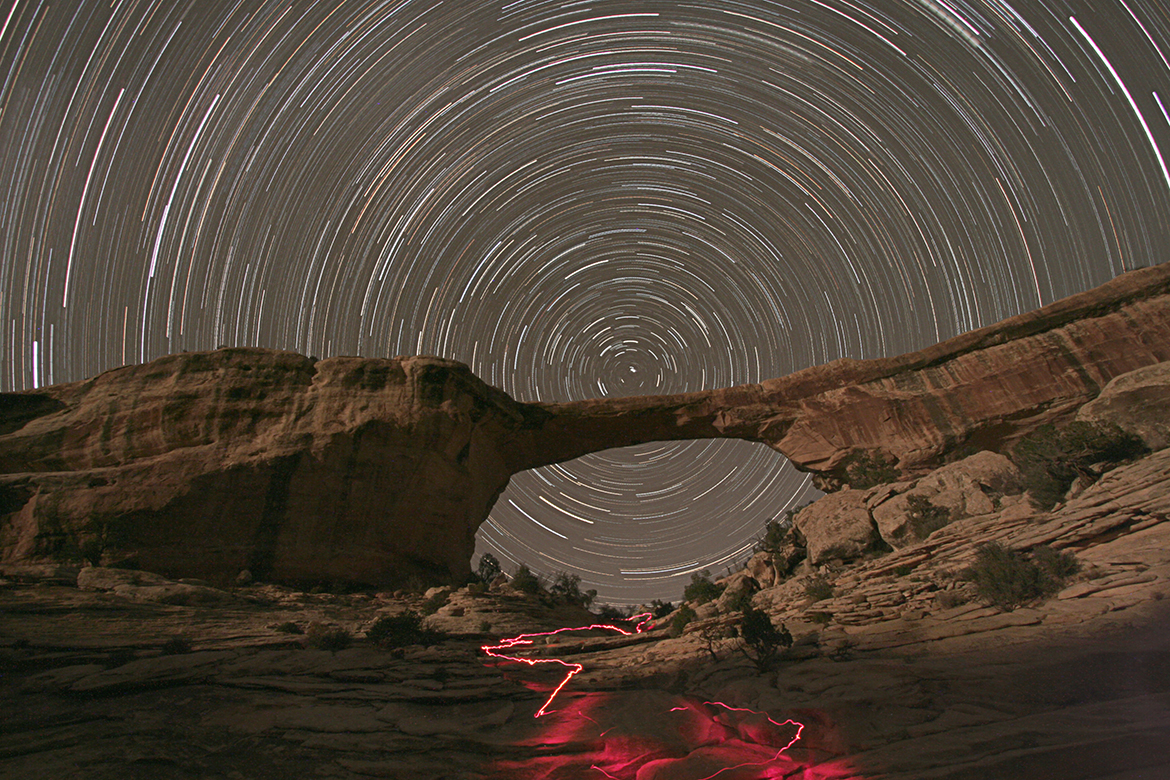
Natural Bridges National Monument is in Utah and is the first International Dark Sky Park. It is so remote, and the air so dry, that one can see stars all the way to the horizon! And nowhere on that horizon is any hint of city light dome. The park itself is powered by a solar array; the residents are misers in conserving their battery power.
The bridges are not to be confused with “arches” (found in a national park elsewhere in the state), as they are formed by different geologic processes. There are three popular bridges here, accessible by short hikes. This one suited my purposes best, lying on an east-west axis and in a valley allowing a view at the celestial pole. Across a dry riverbed, I found the position to capture this low angle composition.
I set up my cameras (I was also shooting film) and started the exposure sequence. The moon was in the process of setting and it illuminated the texture of the rocks, and also helped me find my way back to the trail head where I had a telescope and mount. I enjoyed some deep sky observing, but then needed to get back to tend my cameras. The 15-minute hike was now in complete darkness. A flashlight was needed to avoid wandering off into the desert at a missed trail marker, and the last of it was the climb under the bridge and down into the riverbed. The route I took is apparent.
Natural Bridge Owachomo (North)
15 Nov 2007
EOS 20Da, EF-S 10-22mm at 10mm
18x5min, f/6.7, ISO 800
previous | nightscapes index | next

